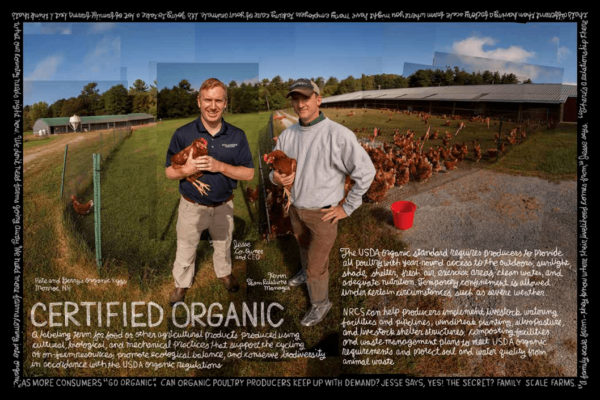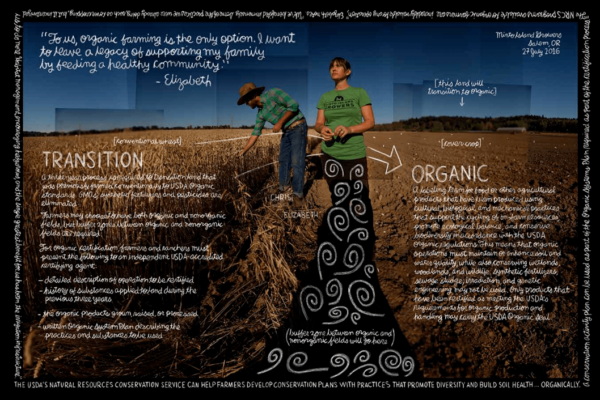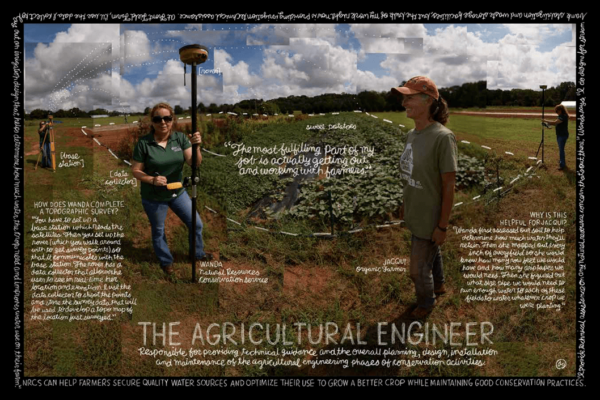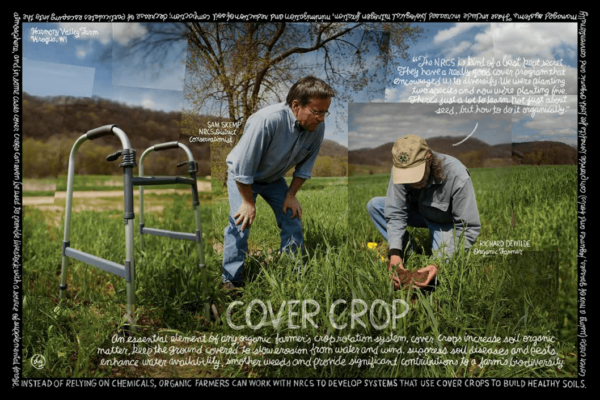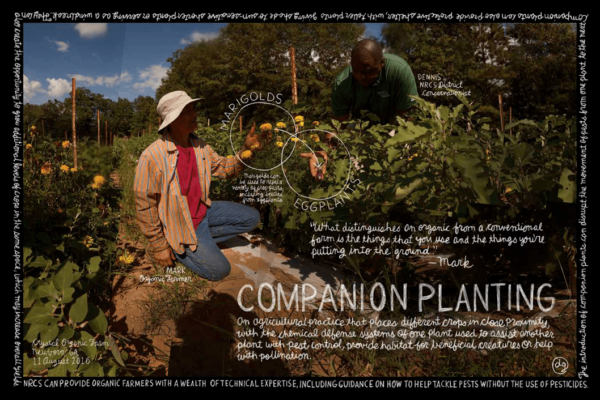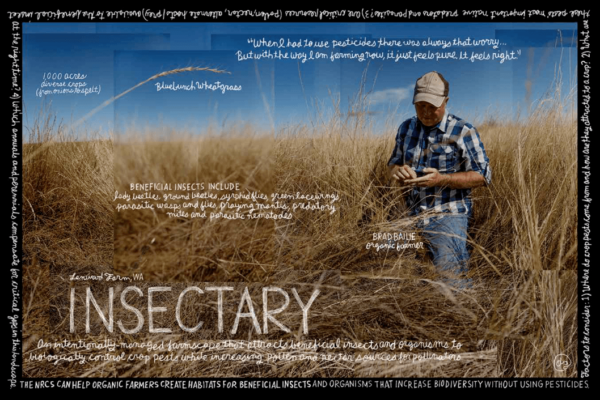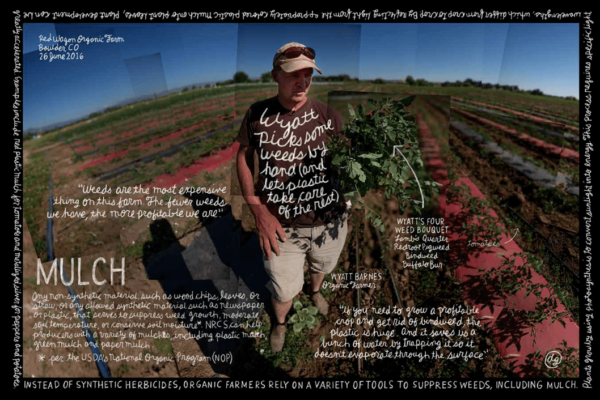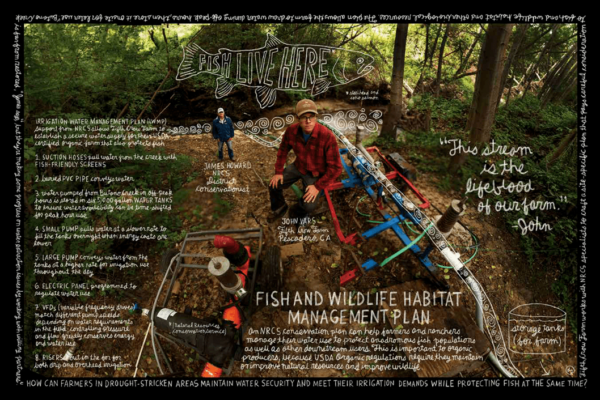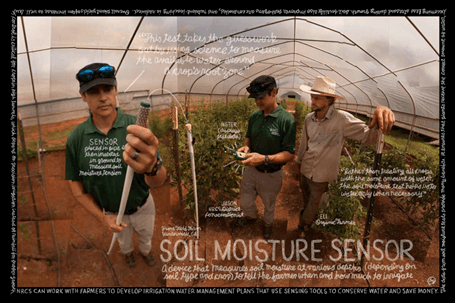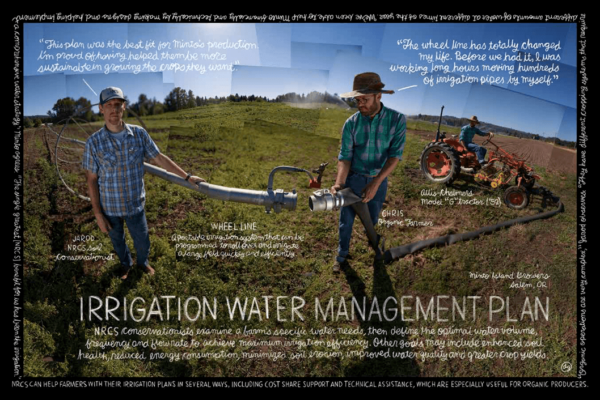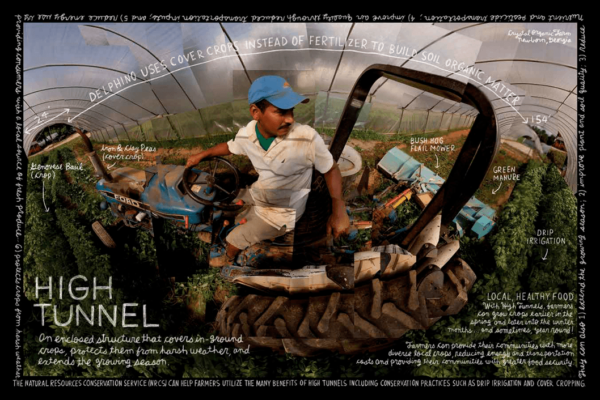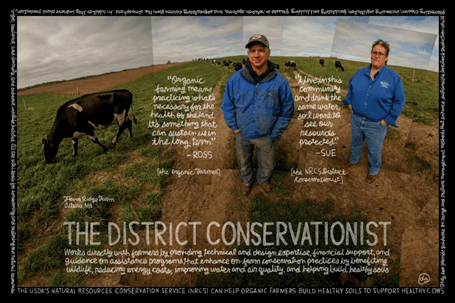This post is from guest blogger Karl Friesen my business partner and friend. Karl is as passionate about sustainability and green living as I am, we both consider ourselves Green Warriors. Please feel free to reach out to Karl to let him know what you think of the post or if you have any questions.
NOTE: If you are not a rancher or a farmer this post still contains steps that you can take immediate action on. You can jump to the section What Can We Do? to read more.
Save the Soil, the Planet & Be Healthier, Win, Win, Win!
Several months ago, a friend told me he 'knew how to solve the Climate Change Crisis.' He shared that he had heard from a trusted source that all we need to do is turn all the deserts in the world, such as the Sahara in northern Africa, into cattle grazing grasslands. These new grasslands would then absorb all of the excess CO2 emitted created by burning fossil fuels since the industrial revolution up until now.
Really? I was skeptical
Understanding the source of your information will prevent you from developing a reputation as one that repeats misinformation.
For example, where would all the water come from to create this desert to grassland utopia?
It needs to be recognized people who live in these places have developed a way of life for millennia built around the desert.
Why would they willingly allow outsiders to move in and change it?
It's no secret that 'do good-ers from the west' don't exactly have a spotless track record in attempting to 'improve' the lives of others deemed less fortunate.
Ironically, at this same time, my local community sustainability network organization (LOSN) sent out their monthly newsletter highlighting the book, The Soil Will Save Us.
Additionally, Kristin Ohlson, the author, and permaculturalist had included the sub-title description of How Scientists, Farmers, and Foodies are Healing The Soil to Save the Planet.
I was intrigued
Perhaps my friend may have been onto something. I had recently read, and highly recommend, How To Avoid A Climate Disaster by Bill Gates and his Breakthrough Energy Team.
The Soil Will Save Us spells out concisely the holistic approach humankind needs to take if we plan on making it through to a future that resembles anything like what we know today.
This book does mention the substantial impact Agribusiness is having on our climate but focuses more on the fossil fuels burned to make our food, transportation, and the pesticides/fertilizers that keep the supply chain working from farm to plate.
The author suggests the agriculture industry, like almost all industries, will need to rethink and revamp most of what they do today if we have a chance at solving the climate crisis.
A couple tablespoons of healthy organic soil contain more micro-organisms than the number of people who have ever lived on our planet.
Reading Kristin Ohlson's book was indeed a proverbial eye-opener, akin to when I first started scuba diving and discovered a whole other world below the surface of the ocean. Reading her book felt very similar, but the discoveries I found in her book are beneath the soil.
The extraordinary life below the surface of the ground, the soil, is equally as complex as fascinating.
I highly recommend The Soil Will Save Us to everyone and hope each of us takes away a better appreciation for the immense amount of life under our feet.
I came to understand that how we treat, enable, and encourage these micro-organisms in our soils can help our efforts to end the global threat of climate change in a significant way.
Does Soil Absorb CO2?
Does Healthy Soil Hold More Carbon Than Unhealthy Soil?
Scientists from around the world have discovered that when soil is healthy, there is a dramatically cooperative interaction between the various micro-organisms and the roots of plants.
In addition, they have found these micro-organisms need the carbon-based sugars the plants create by drawing CO2 out of the air, converting these molecules into oxygen and carbon-based sugars during the photosynthesis process.
The plants, in turn, need the micro-organisms to serve up nutrients they need, i.e., minerals and nitrogen, to their roots.
The micro-organisms break these sugars into carbon and other molecules and then deposit them into the soil. As a result, the carbon stored in the soil was removed from the atmosphere, thus making it that dark healthy soil farmers cherish.
How to Increase Soil Carbon
To check the impact of these organic soil principles, I recently started testing some of the recommendations in Kristin's book on three small garden boxes which I set up at my home.
There were some startling results.
One out of three boxes where I applied just two of the principles outlined yielded much more harvest, much faster, and of higher quality.
Kristin traveled worldwide to collect and vet out these recommendations, visiting and interviewing many organic production farms, universities, and government scientists in nearly every corner of the globe, including many true believers in the benefits of organic farming.
She interviewed many formerly staunch rancher and farmer critics and skeptics who have tested these practices themselves. She met and visited real-world success stories with organic soil and micro-organisms, including healthy soil pioneers and die-hard 'that's just not how we do things here' conventional farmers and ranchers. Kristin's five pages of chapter references is seriously a who's who of the farming and healthy soils world.
The interviewees explain, demonstrate, and show through the pages of her book is partially covered in the above introduction to this discussion. However, there is much, much more. I encourage you to read her book in detail.
Working Together
As mentioned, plants roots, and soil micro-organisms work together to serve each other for what they each need. For example, plants need nutrients the micro-organisms provide naturally, and micro-organisms need sugars from the plant's photosynthesis processes.
Each type of plant needs unique nutrients and feeds different micro-organisms into the soil which is why decades of experimentation and research have revealed that one of the secrets is to mix a diversity of plants in the same plot of soil.
This yields the healthiest plants, aka more significant volumes of higher quality produce than conventional industrialized agriculture—additionally, the healthiest soils resulting in the greatest amount of carbon storage. Thus, helping to reduce CO2 levels in the atmosphere.
The benefits of plant guilds have been known for a long time, a symbiotic grouping of plants that support one another in all their many functions.
A tried and true example of a guild is corn, beans, and squash. Corn provides a stalk for the beans to climb, beans provide nitrogen for everybody, and the big leaves of squash create shade/retain ground moisture.
Another benefit of guilds is that they can support a diverse variety of insect predators, protecting a variety of plants from numerous pesty insects that threaten them. Thus dramatically reducing the need for industrial pesticides on the land and in our bodies. Pests that the industrialized agriculture model spends billions of dollars annually to combat with vast amounts of pesticides that end up in our food.
Finally, mixing various plants, some food-producing, some cover plants, and others mixed in for pest predator cultivation (including up to 12-15 varieties in typical plots) results in higher product yields than the industrial, corporate farm/ranch approach.
These improvements are based on yield per acre, cost inputs reductions, and the labor time to support the production and harvest. And on top of that, the produce and meat are far healthier for our bodies.
Other suggested practices: No-till, cover crops, leaving plant material on the ground to help sustain the micro-organisms in the soil.
Also, the many creative ways to organically fertilize, including methods like intense short period rotational livestock grazing to fertilize with their waste while also helping to break up compacted soil.
These practices and more are all highlighted as steps to take, depending on each soil situation.
Remove It
These efforts remove large quantities of climate changing CO2 from the atmosphere and store it in the soil versus releasing almost all of it while applying chemicals to replicate the natural processes.
Poisoning the soil, a standard practice on the majority of today's large corporate farming operations.
The research conducted and continues on an ongoing basis has been so successful, conclusive and convincing, that organic farmers in California are starting to participate in the carbon offset market.
Selling their ability to store carbon to others through California's Carbon Cap and Trade system. Creating a whole new revenue stream for farmers, ranchers, and forest managers doing the right things on their land contributes to saving our planet for the future.
How Does Modern Industrial Agriculture Harm the Soil?
Typical Unhealthy Industrial Agricultural Soil
- The soils are tilled using fossil fuel burning tractors and release the soil's stored carbon into the atmosphere (more greenhouse gases).
- Fossil fuel-intensive fertilizers, herbicides, and pesticides are spread across the land by more fossil fuel-burning tractors.
- Chemical cocktails destroy the colonies of micro-organisms, replacing them with artificially added substances.
- Dramatically less carbon is stored in these unhealthy soils, and we ingest these chemicals as we eat and drink. Thus, causing untold medical issues from cancer, heart disease, obesity, diabetes, autism, Alzheimer's, and who knows what else.
The scientists studying healthy soils quoted in The Soil Will Save Us have determined that healthy, organic soils can store 5-10 times more carbon than the unhealthy industrialized agricultural soils prevalent on most large farms today.
Tilling opens the soils, which releases stored carbon into the atmosphere, contributing to our climate change dilemma. In addition, many farmers/ranchers either remove or burn the remnants of last year's plant growth, adding further to the pool of global warming gases in the atmosphere. Then they kill off the soil micro-organisms healthy plants need by amending the soil with various fertilizers, pesticides, and herbicides to keep unwanted plants and insects at bay.
Once in this cycle, the only way to keep yields up is to continue this chemical cycle and plant genetically modified 'patented' seeds that require even more soil-killing fertilizers and herbicides. So, naturally, in addition to killing all or most of the nutrient-producing micro-organisms in the soil, distributing these chemical cocktail poisons is completed by fossil fuel burning trucks, tractors, and delivery trucks and trains.
The very micro-organisms we need to help mitigate climate change are killed off, breaking the plant's natural cycle to store waste carbon in the soil. This unhealthy big-ag cycle does not store carbon in the soil in any meaningful manner the way healthy and organic soils do naturally. Unfortunately, true on a large scale for much of the corn, soy, wheat, and other industrialized farms that dominate today's farmlands.
The way forward is away from today's harmful industrialized farming practices and through the reduction/elimination of industrial pesticides, herbicides, and fertilizers while eliminating the monopolistic seed sales/patent practices of big agri-business.
What Are the Basic Steps to Improving Our Soils?
Some excepts in this section are courtesy of USDA NRCS
Kristin Ohlson, through her book, will help you gain a greater familiarity with the steps recommended. In her quest to find the best farming practices, she traveled across North America and Australia. She was pleasantly surprised to learn how committed local farmers and the scientists from USDA’s Natural Resources Conservation Service (NRCS) worked together to not only to grow healthy food but also to heal their soil.
This small off-shoot department within the USDA's much larger, dramatically greater funded 'traditional' industrial farming operations is promoting the soil science approaches highlighted in 'The Soil Will Save Us'.
Ok so, who exactly is the NRCS?
Since 1932, the United States Department of Agriculture’s (USDA) Natural Resources Conservation Service (NRCS) has provided assistance to agricultural producers to conserve the soil, water, air, plants, and animals on their land.
Through offices in nearly every county across the U.S., NRCS provides technical and financial assistance to help agricultural producers — including certified organic and transitioning producers — plan and implement voluntary, science-based conservation practices.
NRCS experts, such as district conservationists, soil conservationists, engineers, biologists, botanists, and others, work together to help producers find and apply conservation solutions while ensuring their working lands remain productive. Staff often live and work in the counties that they serve, and thereby understand local issues and challenges.
First, what is Organic?
Organic farming is one of the fastest growing segments of agriculture. To be “certified organic,” producers must follow regulations outlined by the USDA National Organic Program (NOP). Managed by USDA’s Agricultural Marketing Service, the NOP develops, implements and administers national organic production, handling, and labeling standards.
Organic agriculture is an ecologically based system that relies on preventative practices to deal with weeds, insects, and disease, using nontoxic methods for any problems that arise.
Organic practices require the use of cultural, biological, and mechanical practices that support the cycling of on-farm resources, promote ecological balance, and preserve biodiversity.
Organic producers avoid synthetic fertilizers and do not use sewage, sludge, irradiation, or genetic engineering on their operations.
Healthy soil is the foundation of organic farming. Early leaders of the organic farming movement emphasized that successful farming depends on the health of all natural resources on the farm and in its surroundings. Organic producers strive to develop farming systems that mimic nature and utilize natural processes.
More and more farmers and ranchers will be transitioning to organic to meet growing consumer demand, which currently outpaces U.S. growers’ supply.
NRCS & Transition
To be considered organic and to use the USDA Organic seal, all operations with more than $5,000 in organic sales must be certified. Independent, third-party USDA-accredited organizations certify farms and ranches as organic. The application to become certified organic and use the USDA Organic seal includes:
1. Detailed description of the operation
2. History of substances applied over past three years
3. Organic products grown, raised or processed
4. Organic System Plan describing practices and substances used
It takes three years to transition land to an organic system that was previously farmed conventionally.
Farmers may choose to have both organic and nonorganic fields but must create buffer zones between them.
NRCS Technical Service Providers (TSP) can help producers develop a Conservation Activity Plan for Organic Transition (CAP 138). CAP 138 consists of three sections: Resource Inventory, Erosion Control Inventory, and Summary Record of Planned NRCS Conservation Practices.
The Resource Inventory section may serve as a portion of the Organic System Plan, which is required for certification.
Farmers and ranchers should begin by working with NRCS to develop a conservation plan for their operation. Then, a TSP can develop a CAP 138 for transition and producers can apply for financial assistance to implement conservation practices or enhancements.
Healthy Soil
NRCS can help farmers and ranchers with several conservation practices that build healthy soil. Diverse crop rotations, cover crops, nutrient management and conservation tillage are examples of practices that feed the soil, reduce erosion, improve soil structure, and enhance nutrient cycling and water retention.
NRCS follows four soil health principles:
1. Use plant diversity to increase diversity in the soil.
2. Manage soils more by disturbing them less.
3. Keep plants growing throughout the year to feed the soil.
4. Keep the soil covered as much as possible.
By rotating crops across their fields from season to season, organic farmers add biodiversity and increase resilience in their operations while increasing their soil’s organic matter.
Instead of leaving land fallow after each harvest, organic farmers keep the ground covered with cover crops. Throughout the growing season, the cover crops act as a green manure, providing an additional source of nutrients that build soil organic matter and reduce the need to bring in additional inputs from off-farm sources.
If crops need additional nutrients, NRCS can help producers develop a nutrient management plan that incorporates organic plant, animal, and natural mineral-based fertilizers, most of which release nutrients gradually through the action of soil organisms.
Organic no-till systems, such as the roller-crimper, have also helped organic producers reduce the intensity of soil disturbance in annual crop rotations.
By using NRCS soil health principles and systems, farmers can sequester more carbon, increase water infiltration, and improve wildlife and pollinator habitat — all while harvesting better profits and often better yields.
Weed & Pest Management
One of the greatest challenges organic farmers face is weed management. A single weed can produce more than 10 million seeds, and if they’re not dealt with in time, they can present farmers with challenges for years to come. Instead of using chemical herbicides, organic farmers can work with NRCS to implement a variety of conservation practices that suppress weeds while building soil health.
Cover crops are one of the most effective tools for suppressing weeds, and they work in three ways.
1. When alive, they outcompete weeds for water, nutrients, and sunlight.
2. As mulch, they minimize weed growth by physically preventing the germination of weed
seeds, cutting off access to light and warmer temperatures.
3. When certain legumes, cereals or brassica decompose, they produce natural herbicides
that can suppress weed seed while sequestering carbon.
Rotating crops and timing planting dates to avoid weed germination windows are other effective weed suppression strategies.
NRCS can also help growers implement conservation tillage practices. Organic no-till uses tools like the roller crimper to kill cover crops while leaving their residue as a green mulch that feeds the soil and suppresses weeds. Farmers can use a variety of other mulches made from natural materials, paper or plastic. These are installed at the beginning of the growing season and trap soil moisture while preventing sunlight and weed growth.
Pest management on organic and transitioning farms requires a holistic approach. It relies primarily on preventing and avoiding pests with cultural and mechanical suppression. NRCS coordinates conservation plans with farmers’ Integrated Pest Management plans to protect natural resources and benefit the ecosystem.
For example, organic farmers can plant insectaries to attract beneficial insects, like ladybugs, that biologically control pests. They can use companion planting to draw pests away from crops. Installing nesting sites such as bat and owl boxes can also help manage pests. Cover crops naturally break the cycle of soil-borne diseases, and some soil-dwelling insects, while increasing the soil’s organic matter.
Habitat
NRCS can help organic farmers work with nature instead of against it, building and conserving vital habitat for pollinators, beneficial insects, and wildlife.
Conservation plantings such as field borders, hedgerows, and riparian buffers can help protect
water and soil resources and provide wildlife and pollinator habitat. These may also harbor natural enemies of pests and intercept pesticide and GMO pollen drift from neighboring non-organic farms.
Wildlife corridors and wildlife-friendly fences maintain connectivity for wide-ranging wildlife, such as deer and predators, and keep them away from crops. Structures like owl and bat boxes create places for beneficial wildlife that reduce pests.
NRCS can also provide assistance with biodiversity practices that include stream habitat restoration, tree and shrub establishment, wetland wildlife habitat management, prairie restoration, multispecies native perennials for biomass and wildlife habitat, riparian buffers, terrestrial and aquatic wildlife habitat, and prescribed grazing management.
NRCS not only helps to create wildlife habitat on a farm-by-farm basis, but the agency also targets at-risk species on a landscape scale. NRCS works with partners and landowners to conserve targeted species in specific areas, realizing that many farmers and ranchers working together can make a difference.
Irrigation
NRCS can help organic farmers with irrigation water management strategies tailored to their farm’s specific needs. Conservation practices can also protect water quality in the surrounding ecosystem.
Water quantity. Irrigation management plans combine conservation principles with efficiency, balancing the farm’s water needs with those of nature. Tools like drip irrigation, which provides water precisely where and when it’s needed, can achieve greater precision with flow meters and soil moisture sensors.
Farmers can also conserve water by increasing their soil’s water holding capacity and using conservation tillage to keep the ground covered, reducing water loss through transpiration and evaporation.
A one percent increase in soil organic matter can help the soil retain an additional 20,000 gallons of water per acre that can be banked and become available when plants need it most. NRCS agricultural engineers can use satellite-tracking tools to conduct precise topographic surveys, then design complete site-specific irrigation systems, from wells to pumps to pipes to hookups out in the field, saving water by improving irrigation efficiency. In combinations, these practices add up and make a huge difference.
Water quality. Well-managed organic systems rely on slow-release forms of nutrients, which reduce the risk of nutrient runoff and leaching. These practices help maintain water quality, while enhanced soil structure, water infiltration, and better nutrient retention also protect water quality.
NRCS-developed nutrient management plans, cover crops, and buffers keep soil and nutrients in place and filter runoff water
Learn more about irrigation for your lawn: 15-Advantages of Drip Irrigation
High Tunnels
Across the U.S., farmers are discovering the benefits of high tunnels. NRCS can help producers integrate high tunnels into their operations.
While they may look like greenhouses, high tunnels are actually quite different. Greenhouses are usually constructed of glass and metal, with plants grown in pots above the ground. High tunnels are polyethylene, plastic or fabric covered hoop structures that can be assembled for a fraction of the cost, with plants grown in raised beds or grown directly in the ground.
Because the growing conditions are controlled, plant health is optimized. High tunnels protect plants from severe weather and allow farmers to extend their growing seasons — growing earlier into the spring, later into the fall, and sometimes, year-round. And because high tunnels prevent direct rainfall from reaching plants, farmers can use precise tools like drip irrigation to efficiently deliver water and nutrients to plants. High tunnels also offer farmers a greater ability to control pests and can even protect plants from pollen and pesticide drift.
A number of soil health practices can be used in high tunnels, including cover crops and crop rotations, which also prevent erosion, suppress weeds, increase soil water content, and break pest cycles. Perhaps the best thing about high tunnels is that they help farmers provide their communities with healthy local food for much of the year – food that requires less energy and transportation inputs and provides communities with greater food security
Livestock & Pasture Management
Organic livestock producers provide living areas that encourage the health and natural behavior of their animals. They use only certified organic feed, provide year-round access to the outdoors and access to pasture for ruminants and don’t use antibiotics or growth hormones.
NRCS can help organic livestock producers with practices such as pasture and grazing management, diverse pasture plantings, fencing, and walkways, watering facilities, and shelters for animals.
Pastures, regardless of organic status, can become overgrazed, which can harm animal health and damage natural resources. USDA organic standards require producers to maintain pasture in a state of good health through management strategies that promote good forage quality and quantity, weed control, infiltration of precipitation, and erosion control.
One key practice is rotational grazing. This approach separates open fields into a series of closed paddocks that regularly directs animals to fresh pasture. The size of these paddocks is determined by the number of animals, time of year, grazing duration, and quality of available forage. Proper fencing and adequate water supplies are features of these intensively managed grazing systems.
Fences can control erosion or impede animal access to sensitive areas like ponds, streams, wellheads or protected habitat, while gated paddocks can be opened and closed to provide cattle access to fresh pasture. Diverse pasture plantings on provide livestock with well-balanced, nutritious forage that keeps them healthy. Using season-specific plantings is also good for the entire ecosystem.
Five Steps to NRCS Assistance
Here’s what to expect:
1. PLANNING. NRCS technical assistance is free and voluntary. The first step is to visit your local field office and work with a conservationist on a conservation plan that meets the goals of your operation. Ask your conservationist if financial assistance is available to implement any the practices outlined in your conservation plan.
2. APPLICATION. NRCS can help you fill out the right forms for the application process. Applications for most programs are accepted on a continuous basis, but they’re considered for funding in different ranking periods. Ask your local NRCS conservationist about the deadline for the ranking period to ensure you turn in your application in time. You can also apply for financial assistance and manage applications, contracts, and conservation plans online through the NRCS’ Conservation Client Gateway.
3. ELIGIBILITY. To determine eligibility, you’ll need an official tax ID(Social Security number or an employer ID). You’ll also need a property deed or lease agreement to show you have control of the property. You’ll also need a farm and tract number. If you don’t have a farm and tract number, you can get one from USDA’s Farm Service Agency (www.fsa.usda.gov).Typically, the local FSA office is located in the same building as the local NRCS office.
4. RANKING. The NRCS will take a look at the applications and rank them according to local resource concerns, the amount of conservation benefits the work will provide and the needs of applicants.
5. IMPLEMENTATION. If you’re selected, your next step is to sign the contract. You’ll then be provided standards and specifications for completing the practice or practices and will have a specified amount of time to implement. Once the work is implemented and inspected, you’ll be paid the rate of compensation for the work if it meets the NRCS standards and specifications.
For more information on how NRCS can help you, visit your local NRCS field office, or visit: NRSC Organic.
Why Are Organic Soils Better?
There are significant health improvements to consumers when they stop ingesting the chemicals used by industrialized agricultural farming. We no longer must partake in the grand-agribusiness involuntary experiment on our bodies. It has been thoroughly studied and well documented that those who eat organically, consume less pesticides and eliminate GMO from their diets and are simply healthier.
Kristin’s research shows organic farming practices also improve the crop yield per acre, so a real win, win, win. These facts totally eliminate the notion that big-agribusiness has been selling. That the only way to feed the billions of people on the planet is to follow their human and planet damaging business model. Farmers have to buy their artificial seeds, grown with artificial fertilizers and protected with massive doses of artificial, biologically quite harmful to humans, pesticides and herbicides.
While also, eliminating the opportunity to draw out of the atmosphere and capture in the soil large quantities of CO2. Simply releasing almost all of the soil carbon into the atmosphere by using the standard 'traditional' approach on large corporate farming operations. Practices which turn a significant problem into many more problems versus providing a significant beneficial opportunity on each of these same fronts by going organic.
As consumers our choice has never been clearer. Eat healthy, organically produced foods, support local farmers and save the planet, or stuff poisons into your body and contribute to the Climate Crisis.
What Can We do?
There are many steps and alternatives each with challenges we need to pursue. As stated in How to Avoid a Climate Disaster, we are currently putting a huge amount of CO2 into the atmosphere from so many different sources every moment of the day throughout the year. And, until we eliminate this vast amount of CO2 emissions ideas like storing carbon in the soil or in underground caverns just will not have the impacts we need.
It will take time for solutions to reduce emissions just like it will take time to get serious about storing carbon in vast acres of land. We need to absolutely be fighting on all start on all fronts. We can make similar decisions to reverse the negative soil impacts brought on by the advertising campaigns of the lawn fertilizer industry.
- Reduce the amount CO2 in the atmosphere through soil storage approaches homeowners with lawns and landscapes can change the way they maintain these spaces and transition them to personal carbon storage spaces. In the US lawn grass is the #1 most grown plant., far outpacing the agricultural sector in opportunity acreage in the country.
- Convert farms/ranches to organic throughout the world.
- Purchase organic at your local grocery or farmers market to support healthy foods and organic soil carbon storage.
- Use cover plants
- Lawns with a mixture of clover and grass are healthier and need less watering. Learn more at: What is a Drought Tolerant Garden
- Fertilize organically
- Aerate lawns versus rotational cattle grazing naturally. Although in my home town there are some goats you can rent to mimic the historical grazing that used to keep our soils healthy.
Our lawns and the surrounding areas can contribute to the solutions to climate change while saving you time and money. The city of New York, Harvard and Princeton Universities are just a small handful of many organizations that have moved to organic methods for their parks and greenspace maintenance. Additionally reducing taxpayer expenditures on fertilizer, herbicides, and pesticides.
Once we have cleaned up the problems at hand, maybe then we can discuss turning North Africa into a lush utopia. But until then, we have plenty to work on in our own backyards, literally.
Each of us needs to focus on all fronts and it’s not going to be easy. Encourage the elimination of fossil fuels from our lives like saving energy, taking less trips and getting electric vehicles and buying consumer projects that have less impacts than the other choices. All through one of our most powerful actions we can take. Our consumer purchases and consumption habits. You will find many inspiring blog posts and other information at Blended Tribes.
When you visit be sure to take our Green Warrior Challenge to see where you can improve your lifestyle and reduce your footprint.



